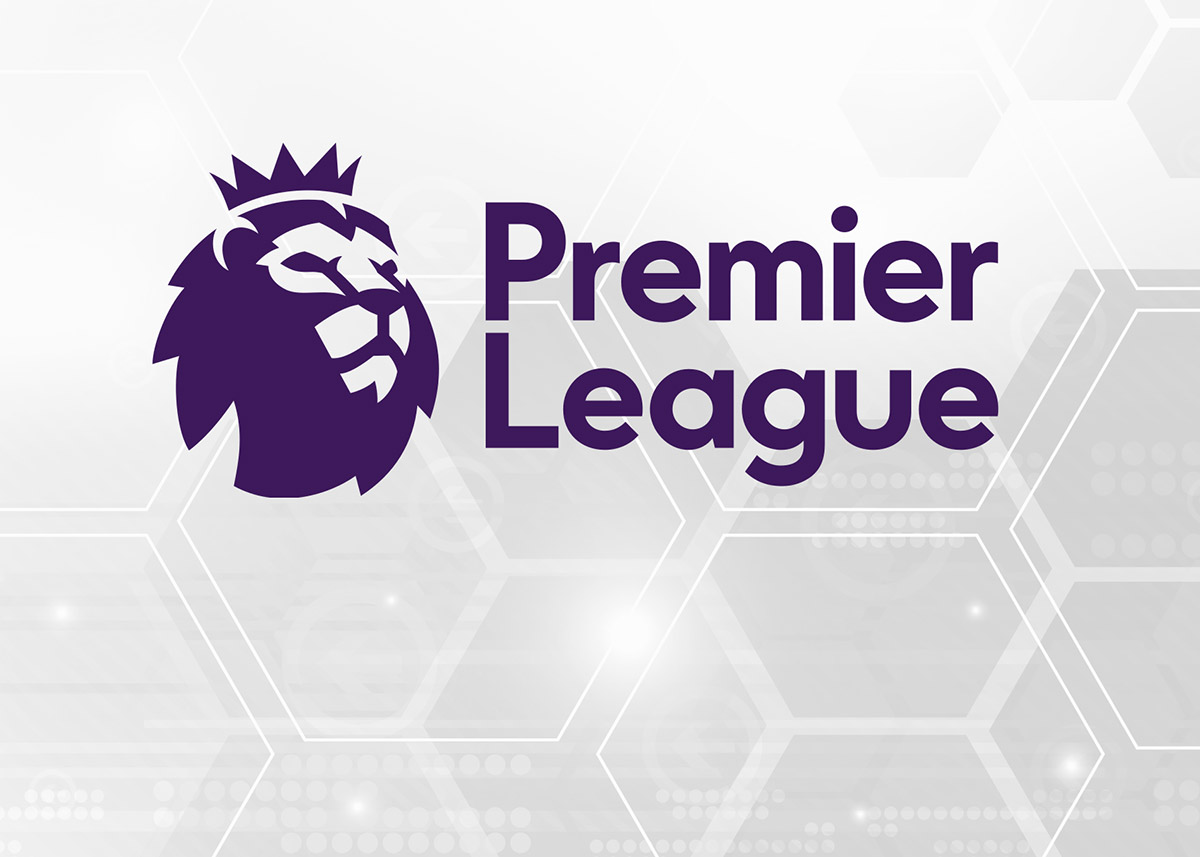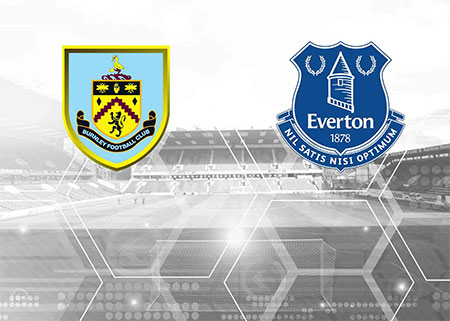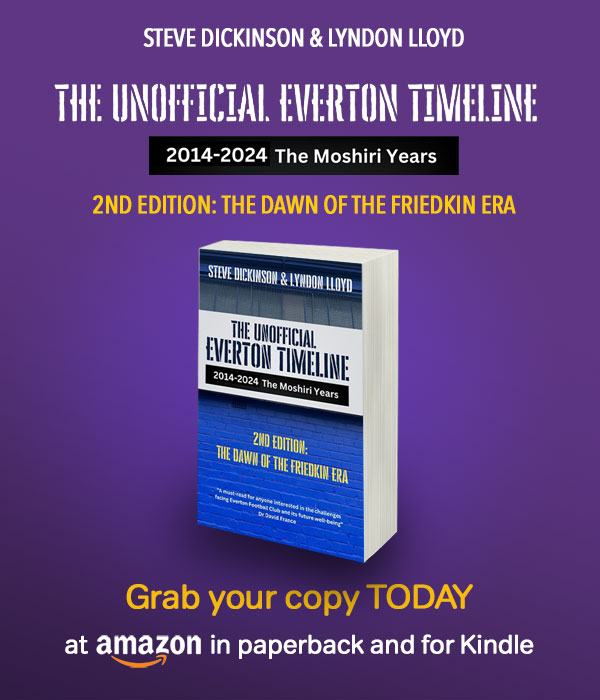This Week — 33 Years Ago
Looking back to November 1989, a watershed for Everton after which they could no longer be considered a force at the top
Last week, I wrote about October 1984, and how that month, and in particular the emphatic win over Manchester United, established Everton as serious title contenders. This week, I’m skipping to the other end of the story, to November 1989, which was, for me, the watershed after which they could no longer be considered a force at the top.
Background
A couple of months back, I wrote about 1988-89 and what a disappointing league season that turned out to be. Well, a year on, and Colin Harvey looked to have finally cracked it.
This time, Everton looked like sustaining their bright start. This time, the new striker, Mike Newell, looked set to maintain his early form, and had already earned an England call-up in October (and this wasn’t one of those token gesture friendly caps either – it was for England’s most important qualifying match for years).
And the other new signings – Norman Whiteside and Martin Keown – in addition to providing greater strength in depth, also gave the team more grit and character than perhaps they’d had the previous season.
And this character already seemed to be evident as they quickly recovered from whatever setbacks they’d endured so far this season – again, in complete contrast to the season before.
They lost the opening match at Coventry, conceded a last-gasp equaliser at Hillsborough, and lost what would be the last top-of-the-table derby to date, after taking the lead (Mike Newell again). And still, Everton regained top spot in late October with a 3-0 win against defending champions Arsenal.
They arrived at Villa Park on Sunday 5 November 1989 for a televised game knowing that, after the previous day’s results, a win would put them back on top.
The Game
I’ll keep it brief – Everton went 0-6 down before scoring 2 late goals to make the scoreline look marginally less dreadful. For anyone with a penchant for masochism, the full game can be viewed on that well-known internet video site.
There’s enough of a grim feeling after yesterday’s home defeat to Leicester, so rather than add to the feeling by going into the game in detail, I’ll instead comment on a few interesting things from the parts of the game that I re-watched:
The TV coverage begins just a couple of minutes before the game starts. An hour’s hype before a game is no more necessary now than it was back then. No sooner have Elton Welsby and Andy Gray introduced themselves, than it was time to go over to the commentary team.
The commentary team that day were Brian Moore and Ian St John. There’s something almost soothing about Brian Moore’s voice, and his style was similar to Barry Davies in that he was happy to leave comfortable silences throughout the game, allowing the crowd noise or the football itself do the talking. Unlike today’s commentators, he knew that he was just there to facilitate, and that the match itself was what people had tuned in to be entertained by, not him.
Ian St John was truly professional and impartial, which is something, given the stick he must have taken from Everton fans over the years. It’s also quite telling that co-commentators back then, whether it be St John himself or Trevor Francis or anyone else, would often only speak when the commentator said their name. So refreshing. Now, they give their input when no-one asked for it and happily talk over the commentator. Listening to a game on the radio is getting just as unbearable – the commentary team waste about a third of the match engaging in cringey “banter” and in-jokes among themselves.
If that game were played today, there’d be numerous bad Bonfire Night themed puns or jokes, and Spitty would be joyously celebrating every Villa goal and screaming over the commentator after each one. EEEEE VILLA ARE THROWIN’ EVER’ON ON THE BONFIRE EEEERE etc
Maybe this is just me, but it also seems like the game re-started a lot quicker back then – they didn’t show anywhere near as many replays of goals as they do now, and yet when they went back to the ‘live’ game, it looked as though the action had been back underway for a while.
Granted, the last couple of years, they’ve had to wait for the VAR checks after every goal – I mean, in the years before that, I don’t remember that happening, unless the goal was scored by the side that were still losing. Makes you wonder if recent refs were under instruction to not signal the restart until they’d had the all-clear from the broadcasters that they were ready – the couple of minutes after a goal being our equivalent of a “TV time-out”.
Or maybe modern players are told to take their time and not run back into position after goals to conserve their energy? Or maybe they don’t have the same innate urge to just get on with the game that the previous generation had? Or maybe I’m just reading way too much into it.
Half-time was a lot shorter too. The recording must have stopped for the adverts, so there’s no way of knowing for sure how long half-time lasted – all I can say is they only seem to have a couple of minutes to talk about the goals (3-0 to Villa at this point) before going back to it. These days, you don’t seem to get much change out of 25 minutes for half-time.
At the end of the game, the interviews are brief, there’s very little analysis; instead, they show all the goals from the previous day. As a viewer, that’s what I’d sooner see.
Final interesting thing – for me anyway – is that, when the league table is shown afterwards, Liverpool had only played 11 matches while everyone else in the top half had played 12. As far as I can tell, with the league cut to 20 teams and only 2 international breaks that season, it left a surplus match day, so each team were given a “bye-week” of sorts. Kinda like a precursor to the “winter break”.
Everton’s looks to be the weekend before Christmas that season. Liverpool’s must have been a lot sooner. Given that fixture congestion tends to only become an issue towards the end of the season, and considering they’d want to get the England and Scotland players refreshed ahead of Italia 90, you’d think they’d have the bye-week in the latter half of the season instead. Or just kept a weekend before the March/April International friendlies clear. But hey, when have the people who organise the fixture schedules ever done anything that makes sense?
On to Everton, if I must, and their goal scorers that day were Tony Cottee and Peter Beagrie (technically Beagrie’s effort has to be credited as an own goal by Paul McGrath). Anyone who’s read Graeme Sharp’s autobiography will remember that, while almost all of Colin Harvey’s signings came in for some quite cutting criticism, these two players took the worst of it.
In fact, Sharp even cites this game – can’t quote precisely, but he says something to the effect that Cottee came off the pitch pleased with himself because he’d scored even though the team were 0-6 down.
The TV cameras don’t show any close-ups of the players immediately after the final whistle (again, so different to now), but Cottee certainly doesn’t look pleased after he scores – he runs back to the half-way line straight-faced. Okay, he clenches/pumps his fist a bit, but that seems more to salute the away fans than anything else.
On the signing of Peter Beagrie, Sharp tells us that Kenny Dalglish called him at home to tell him that he’d booked him in for a cartilage operation, and when Graeme asked what he was talking about, was told that he’d need one because Everton have just signed Peter Beagrie.
Oh, stop. My sides.
Incidentally, just 2 years after giving him dog’s abuse in his autobiography, Graeme Sharp happily appears on the Tony Cottee’s Career Goals DVD to talk about what a good striker he was. Maybe he’d had a change of heart, maybe the criticism in the book was exaggerated to sensationalise it a bit, maybe the club made him appear on the DVD as the Everton rep, or maybe there’s another reason...
Epilogue
This was a setback that Everton couldn’t immediately recover from. A humiliation like this on live terrestrial TV was hard to live down. And the rub of the green that they’d maybe had before the Villa game now went against them. They’d lose at home to Chelsea next time out, with Cottee having a goal disallowed for reasons I still can’t fathom.
They then conceded a last-minute equaliser at home to Wimbledon before losing twice at the City Ground in the space of a few days – knocked out of the League Cup by a controversial indirect free-kick after Southall was deemed to have taken too long/too many steps holding the ball, and then losing the League game there to a penalty.
So a cup exit and 1 point from 4 matches, and even that point would have felt like a defeat in the circumstances. In terms of the optimism and excitement going into the month, and the dejection and gloom coming out of it, November 1989 may well be the most miserable month in Everton’s history.
The '80s are synonymous with Everton’s most successful time, so if that was the game and the month that announced their demise, it’s kinda fitting that it came as the '80s were literally about to end.
And I said I wouldn’t bring the mood down!
Actually, there was a final sting from Everton. It took about 4 months, but they did get their act together in the league and again embark on the kind of run that had made them pace-setters the previous autumn.
Victory over Derby County on Easter Monday, courtesy of Kevin Sheedy’s brilliant first-time volley, saw them climb to 3rd in the league, which was actually higher than their position going into that fateful match at Villa Park .
3rd in the table with just 3 matches remaining – they’d never be so high so late in the season again.
Like I say, this proved to be the sting in the tail of a dying beast, rather than a resurgence. In the next 6 months, they’d win only one of 13 league matches, unacceptable form that would see Colin Harvey dismissed... only to return about a week later as Howard Kendall’s number 2 again. But that’s another story.
As for Mike Newell, he wouldn't score again until the final day of the 1989-90 season. After chipping in with roughly another half a dozen goals the in the following campaign, he'd join the aforementioned Kenny Dalglish at Blackburn, where he did live up to some of that potential, scoring 21 goals in all competitions in 1992-93 and helping them challenge for the title in 1993-94 - he bagged a brace at Goodison on the windswept Easter Monday as Blackburn won 3-0 to put the club that sold him into even more serious trouble.
Although hit by injuries and losing his place to Chris Sutton for much of 1994-95, he did make enough appearances to qualify for a Championship medal, something many thought he'd receive with Everton in that promising early autumn of 1989.
Reader Comments (7)
Note: the following content is not moderated or vetted by the site owners at the time of submission. Comments are the responsibility of the poster. Disclaimer ()
2 Posted 07/11/2022 at 11:12:42
There's something about this time of year. I often refer to them as an Everton October, but more recently it's being extended into November!
That match was depressing. I didn't even like the strip!!
Newell never convinced me even though he showed potential in patches. I suspect in hindsight, my view was blinkered as I compared everything striker to Sharp. I guess that's harsh. Some of the players we bought around that time and after gave us brief moments optimism.
However.
Tony Cottee. A coup at the time with him choosing Everton over Arsenal. Did he ever live up to being the most expensive British signing or was he victim of backing the wrong horse?
Stuart McCall; robust and popular, but no Peter Reid.
Peter Beagrie; just massively frustrating. For younger fans who think Anthony Gordon and Demarai Gray try to do it on their own, watch footage of him trying to beat his man several times. After he'd already beaten him several times.
Pat Nevin. Tricky, great to watch at times and loved him, but no Trevor Steven. I thought he slowed the game down too much too often.
Neil McDonald. No Gary Stevens. Nowhere close.
Martin Keown. Excellent player, brute of a defender and a leader. He was never going to hang around at a club on a downward projectile as he proved by moving to Arsenal to achieve great success.
I don't want to sound harsh in comparing to my boy hood idols as that is probably unfair. It's just to emphasise that although we made high profile signings, we were swapping our Mercedes Benz's for Ford Focus's. We were downgrading. And pretty rapidly in hindsight.
I have to comment on your commentator remark. Yes, I wish we could go back to have more sports journalists assisted by the odd ex-footballer. I can't stand those pre-staged quotes that they clearly have been waiting to get in. And I keep saying this, but what did we ever do to offend Chris Sutton?
Final one, 3rd in the league that late in the season never again? We will be when we win our 10th league title.
3 Posted 07/11/2022 at 11:53:51
Normal service was of course resumed with indecent haste.
4 Posted 08/11/2022 at 18:20:45
An early mistake by Colin Harvey was the failure to strengthen the squad from a position of strength in the summer of 1987. The players we recruited the following summer were below the standard to which we had become accustomed. From then it was all downhill.
5 Posted 08/11/2022 at 18:43:21
6 Posted 09/11/2022 at 19:35:10
7 Posted 09/11/2022 at 20:05:12
I remember watching that game with my dad on TV and he was absolutely furious! Looking back I hadn't realised we were so close to the top.
Add Your Comments
In order to post a comment, you need to be logged in as a registered user of the site.
Or Sign up as a ToffeeWeb Member — it's free, takes just a few minutes and will allow you to post your comments on articles and Talking Points submissions across the site.
How to get rid of these ads and support TW










1 Posted 07/11/2022 at 10:09:44
I remember this game all too well. I also remember the growing disbelief that a club that had ridden so high in the '80s was in decline. How deep that decline got (has got?) was unimaginable back then.
Around this time, they started talking about an English 'Super League'. This eventually emerged as the Premier League. It would need the support of the 'big 5'. Tottenham, Arsenal, Manchester United, Liverpool and Everton. For the young people, Man City and Chelsea were non-runners back then. We'd been shafted by the European ban, which was no fault of ours, and are still paying for that now.
As for the new players taking stick, Pat Nevin writes very eloquently of the demise of the club in that era. A lot of it was down to the remaining '80s heroes not wanting to gel with the new guys. Perhaps if the likes of Steven and Stephens (even Kendall) had stuck around, we could have bedded one or two new players in each year rather than have to try to replace so many at once. Who knows?
But what I do know is that, as hard as being an Evertonian can be, the few ups are so much better for the many downs.